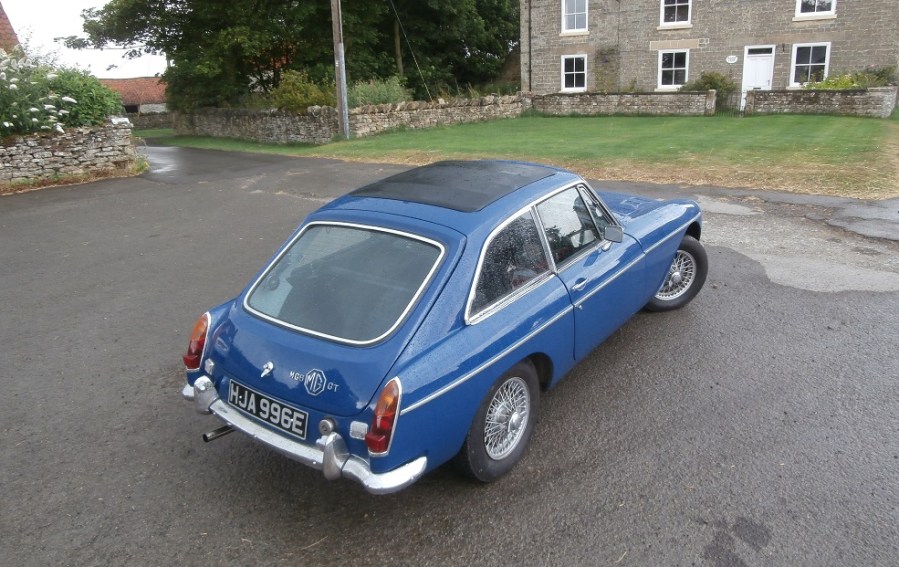The MG octagon has to be one of the most familiar motoring badges ever produced. Here we take the eight-sided emblem and select eight of the most significant post-War MGs ever produced.
MGB: The British Sports Car
If there is one car that can represent all that is MG, indeed a vehicle that can be called the archetypal ‘British sports car’ it has to be the MGB. A production run of some 18 years and over half a million units produced was a creditable achievement that still deserves credit today. Look deeper, however, and its success is a little surprising since there was nothing very new and ground-breaking about the B.
Where the MGA had been such a major step forward from its predecessor T-series models, the replacement B did not appear a particularly adventurous design (produced in-house at Abingdon), looking like the Midget’s older, wiser, if rather conventional, big brother. Under that new skin, things were quite old-fashioned; the engine could trace its roots back to 1947 and the front suspension geometry went further, back to the pre-War TD. Despite all this it was a well packaged and well-priced (especially in the US) sports car. When launched in 1962, the B-series engine had been stretched to 1798cc and 95bhp, the four-speed gearbox had the option of the Laycock overdrive allowing it to top 100mph. The performance matched its main competitor the Triumph TR4 launched a year earlier, but the most important characteristic was that it was well-balanced, handling well enough for even the most ham-fisted driver – all of which meant the B had a very broad appeal, with the slightly dated aspects of the new model giving it a true ‘traditional’ appeal.
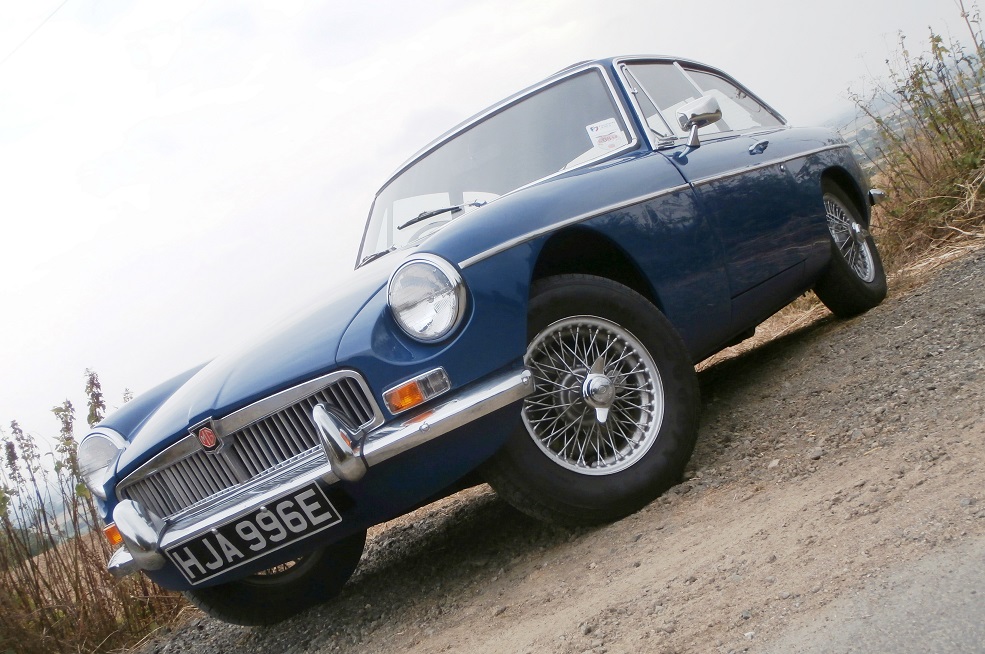
Production of the MGB in 1963 was a new record for the company at over 23,000 units, to be broken again the following year. In the early years the B could do no wrong, the appeal broadening when Pininfarina assisted the design of the coupe GT model. The hatchback rear of the GT model increased the versatility of the MGB, broadening the market further and increasing sales. Even when a mistake was made -like the three speed automatic models in 1967 – it didn’t seem to upset the keen following for the model. That same year the ‘B’ took a severe swerve when a six-cylinder engine was shoe-horned in under a new bulbous, extended bonnet to create the MGC, aimed at being a direct competitor to the much-loved Austin-Healey 3000. Rushed and under-developed, the larger engine gave the chassis a nose heavy dynamic, hefty steering and destroyed the B’s lively nature. It was panned by the Press at the time, who declared it no match for the Healey in handling or character. It was fast, topping 120mph, but the public believed the Press reports; under 9000 were built (half of which went to the US) and the MGC and MGC GT was axed in 1969.
At this time, MG was well and truly mired in the mess that was British Leyland, and Triumph was the favoured brand for future sports car models. Yet still the MGB carried on, with few significant changes except for the nadir for the model occurring in 1975 when the suspension was hiked up 1.5in and ugly black bumpers fitted to keep the regulators happy in the US. Engines for these American Bs were emission strangled to produce only 62bhp (close to what late model TFs were capable of in the 1950s).

These regulations also meant the US never got to sample what has to be the greatest MGB model, when the Rover V8 was fitted and the MGB GT V8 was born. Finally, the B got a ‘modern’ power unit that was no heavier than the old four-cylinder. Styling was hardly changed, subtle V8 badging and different wheels the only significant changes, but behind the wheel… The MGB GT V8 would hit 60mph in under eight seconds, which compared to a crippling 18.3 seconds for the four pot US car. Blindly, and stupidly, the BL management couldn’t recognise the potential of this car, it was never made available for America (surely the land of the V8!) and less than 2600 were built.
The B remains for many the ‘last real MG’ sports car and it ceased production in 1980 as the trials and tribulations of BL management endeavoured to discover new lows. A highly successful sports car certainly, but you still have to wonder – what if?

MG Metro and Metro Turbo: Hot hatch heaven
The return of the MG badge to the Metro in 1982 was something of a shock to the enthusiast. Abingdon had been closed, sports car production ceased, indeed for some the last MG ever, the MGB, had been cancelled and now this! At the time, the expectation on the standard Metro was enormous, it was the bright new future for the Austin Rover Group and so producing a ‘hot hatch’ version was a very sensible marketing ploy. And if the flat cap and leather driving glove brigade disapproved, the general public took the opposite opinion. The MG Metro was produced for over eight years and production topped 120,000, well exceeding Austin Rover’s initial expectations.
The positive vibe that came with the MG Metro led the company to produce the MG Metro Turbo, with assistance from Lotus Engineering to make sure that the 93bhp produced by the 1275cc engine and Garrett T3 turbocharger could be transferred to the road, while still allowing the driver to steer the thing! Now I speak from personal experience here, having been lucky enough to have a long term test MG Metro Turbo while on Autocar magazine, and it was a great little buzz box and, dare I comment, worthy of the MG badge (especially with those bright red seat belts!). A highly successful one-make race championship followed, which probably helped deplete the stock and when added to the variable build quality of Austin Rover products at the time, means few MG Metro Turbos survive today.
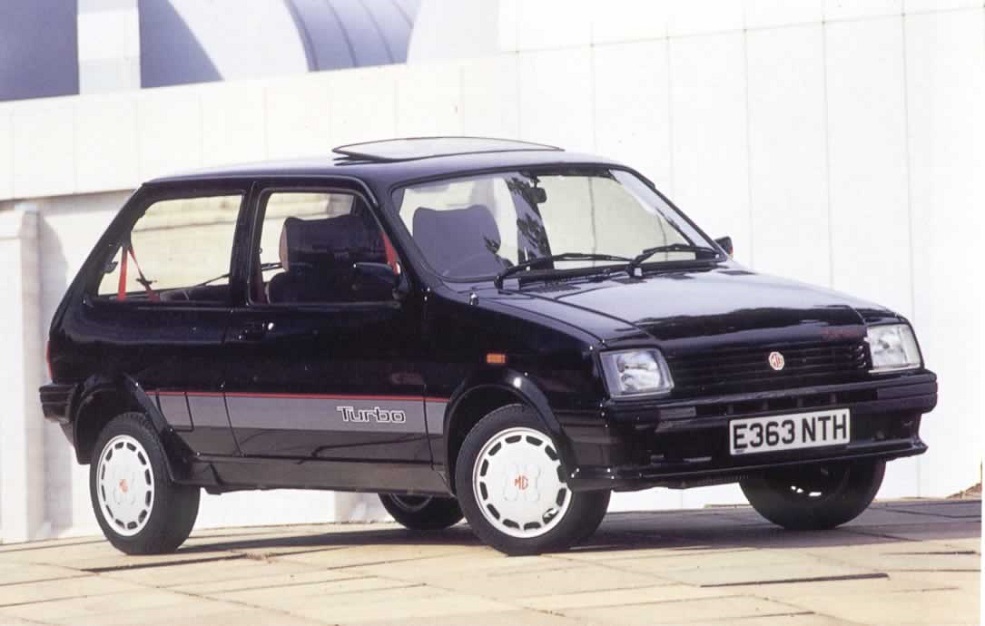
The MG badge engineering philosophy was rolled out to both the Maestro and the Montego, but neither of these models sold in anything like the numbers of the Metro. They did throw up one intriguing fact, however. Only 500 (some claim 505) models of the Tickford body-kitted MG Maestro Turbo were built in 1988 and at the time it was the fastest production MG ever built with its 1994cc Garrett T3 turbo engine producing 150bhp and a claimed top speed of over 130mph. The MG Owners’ Club believe that only half the production numbers still exist, making the Maestro Turbo a serious classic MG saloon – if a somewhat ugly one.
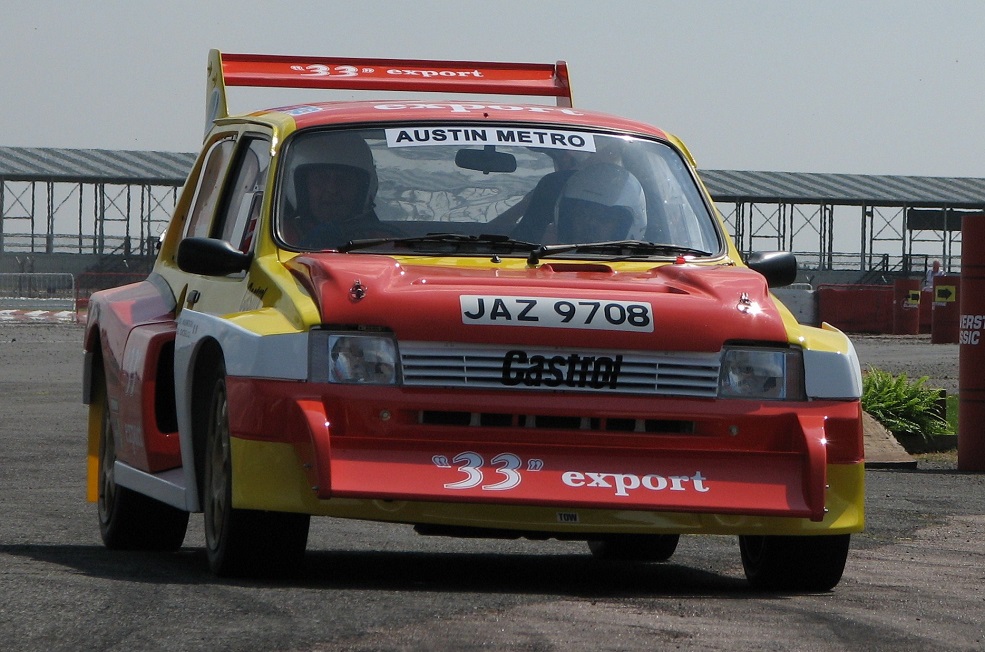
MG Metro 6R4: Group B madness
MG’s motorsporting associations continued in the 1980s and, in collaboration with F1 constructors Williams Engineering, produced what has to be the craziest production MG ever built. International rallying had a far greater profile at this time than it does today, and the Group B era was the most spectacular and many top manufacturers were involved; we had the Audi Quattro Sport, Ford RS200, Lancia Delta S4 and Peugeot 205 T16. The regulations were almost ‘anything goes’ and there was little ‘Metro’ about this beast, but the use of a few body panels did give the monster a passing resemblance to the mass produced small hatch. Turbocharging was allowed if fitted to smaller capacity engines, but the Austin Rover engineers believed that a large normally aspirated engine would have better response (turbo lag at the time was a problem with many engines) and so a new engine was designed. Many thought the engine was just a Rover V8 with two cylinders hacked off, and while some prototype units were produced that way, the four valve per cylinder 2997cc V6 that went in the final car was a completely new engine, which in top spec turned out over 400bhp. In a spaceframe chassis, four-wheel drive, with lightweight body and only two occupants this propelled the MG Metro 6R4 to 60mph in just over three seconds. If you ever get the chance to see a 6R4 launched in anger, you should, it’s an impressive sight.
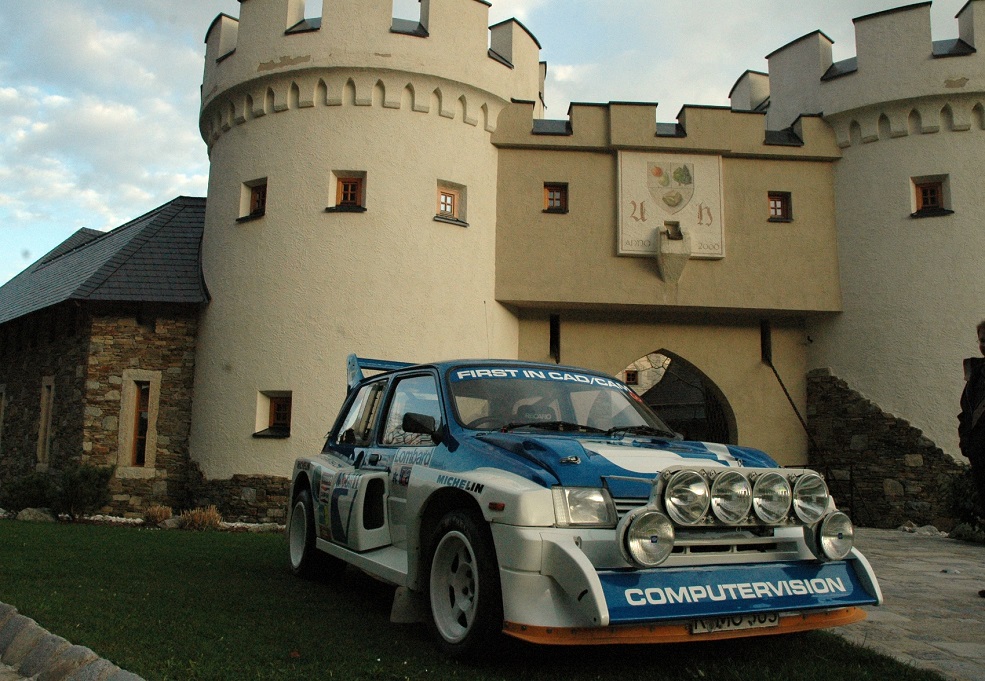
Sadly, it was never really competitive. Austin Rover didn’t have the finance to back the project in the way Audi, Peugeot and Lancia did. Turbo lag had been all but eradicated on the competitor models and the normally aspirated 6R4 was outclassed. To meet the FIA motorsporting regulations, 200 road legal versions had to be built, with a further 20 ‘Evolution’ models then possible. But then Group B was banned as the cars were simply too fast, too dangerous and too many spectators had been killed watching events.
This leaves the MG Metro 6R4 as a rather odd model to bear the famous octagon bonnet badge. Compared to the competition at the time it wasn’t a great rally car, but it is certainly a great, and highly significant MG.
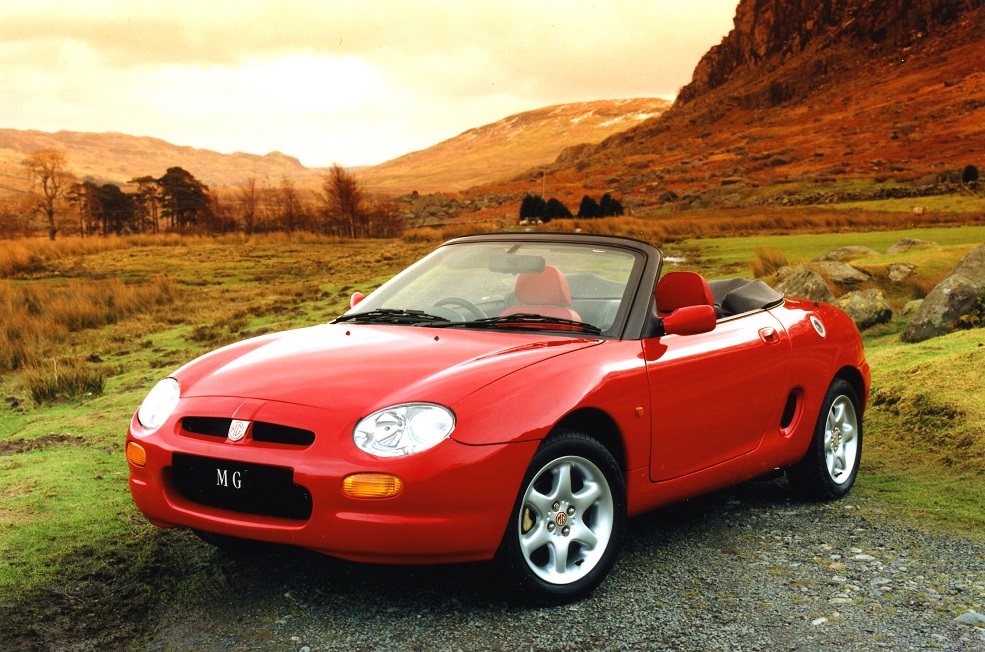
MGF and MG TF: Welcome return
It is impossible when considering the MGs mentioned here not to remember the corporate situation at the time of their launches; indeed, you wonder how some of them ever made it to the showroom. The MGF is one such model. It arrived after BL had been hawked around to and from British Aerospace to finally arrive at BMW, the management decision making and the financial implications remaining hard to understand to this day. Yet somehow, in 1995 a new two-seater MG sports car – and a mid-engined one to boot – arrived to great Press and public acclaim. The first MGF arrived with Hydragas suspension (as fitted to the Metro at the time) giving the car a ride quality far above what many would expect from a two-seater sports car. When launched in September 1995 it came with the Rover K-series 1796cc engine and a respectable 120bhp. Best of all, it looked like an MG, it looked a worthy successor to the much loved and never to be forgotten MGB model range.
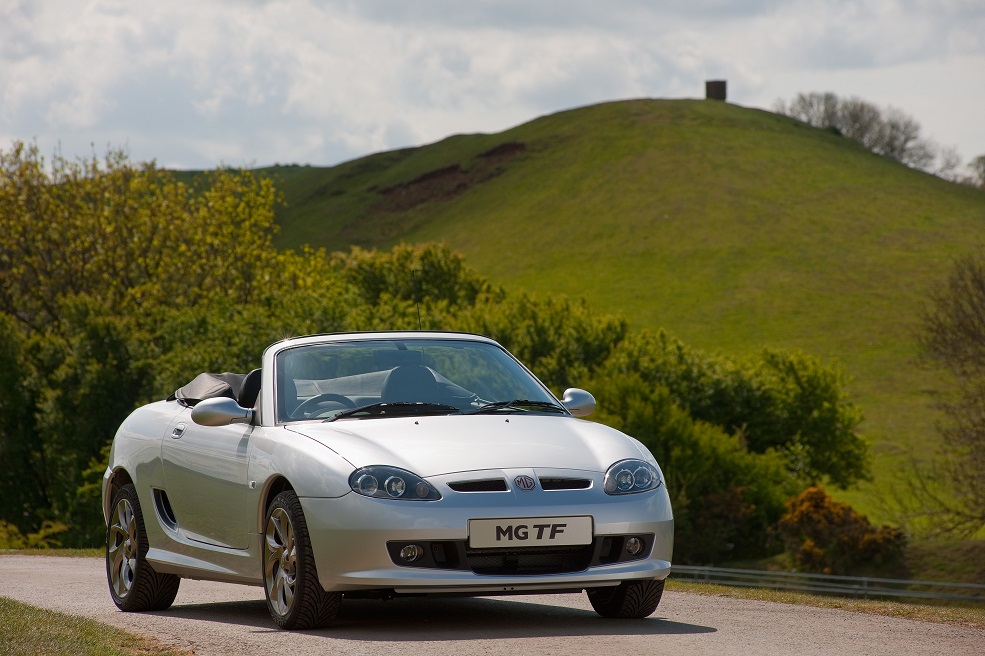
With a few facelifts and engine spec changes it continued into 2002, having sold over 77,000 models. Its replacement, the MG TF was even better looking, with the much improved front end, but now fitted with the more traditional coil and spring suspension, complete with damper control. This gave the MG TF much sharper handling characteristics than the MGF, in what is a better looking body. During the MGF/MG TF production period, BMW unceremoniously got rid of the marque, handing it over to the MG Rover Group consortium. This embarrassing period of ownership culminated in the Group going into receivership in 2005, when obviously all production stopped. Amazingly, even that didn’t stop the MG TF, since production restarted when the pass the parcel shenanigans of this famous fragment of the British motor industry was sold to China.
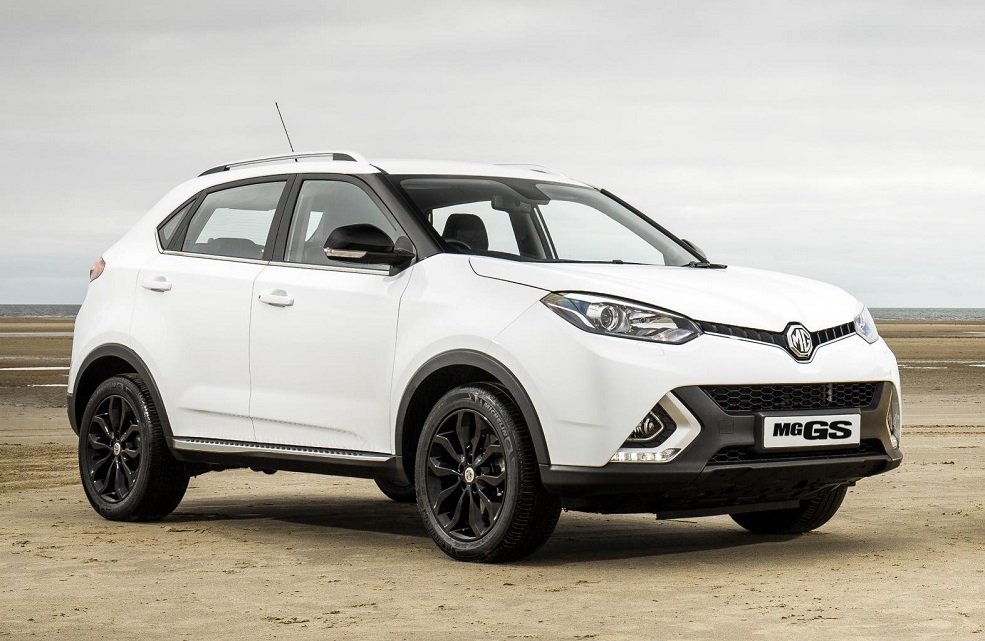
MG GS SUV: Chinese crackers
It’s unlikely that when Cecil Kimber decided to produce MGs from his Morris Garages back in 1924, he thought the marque would still be produced over a century later, and certainly not that it would be owned by a Chinese company. After the financial madness that saw the MG Rover Group going into receivership, the Nanjing Automobile Group purchased the rights to the MG brand and the NAC MG UK was formed, later to be renamed MG Motors. The first car produced was the MG TF, before a new range of MGs were produced. Full credit must go to the Chinese company that could recognise the value of the MG brand where British investors could not, but am I alone in thinking this is a poor footnote to the history of a company that is one of the cornerstones of British motoring heritage?
New models have arrived, MG has even won the British Touring Car Championship in 2012 and a couple of years ago an SUV was produced. Called the MG GS, which has to be an odd choice of initials, this model is only available for Middle Eastern and Asian markets; everyone has an SUV these days, but for this sports car and sporting car brand, it’s no Porsche Cayenne.
The site of the Abingdon factory is now a modern business park and at the entrance there is a plaque reminding people this is where they used to build MGs. It doesn’t, but it should say where they used to build ‘authentic’ MGs.

